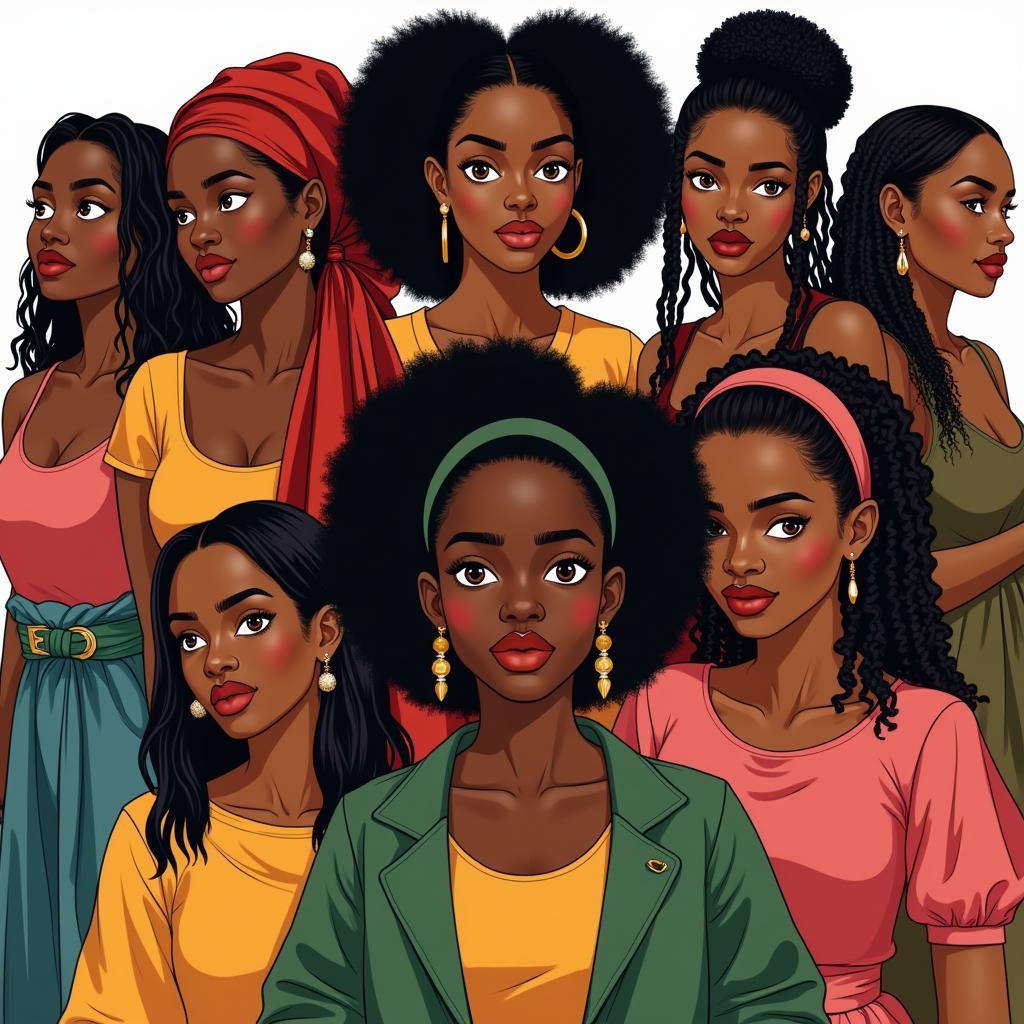African American Culture in the 1950s: A Decade of Change
African American Culture In The 1950s witnessed a complex interplay of continued oppression and burgeoning resistance. This era, marked by segregation and discrimination, also saw the seeds of the Civil Rights Movement sown, profoundly shaping the cultural landscape for generations to come. From the rise of rock and roll to the literary voices challenging the status quo, the 1950s laid the groundwork for a transformative period in African American history.
The Struggle for Equality: Defining the 1950s for African Americans
The 1950s for African Americans was a decade defined by the pervasive reality of Jim Crow laws, enforcing segregation and limiting opportunities in education, housing, and employment. This institutionalized racism fueled a growing sense of frustration and a desire for change. The landmark Brown v. Board of Education Supreme Court decision in 1954, declaring state-sponsored segregation in public schools unconstitutional, was a pivotal moment, igniting hope and galvanizing the fight for equal rights. This struggle permeated all aspects of African American culture, influencing music, literature, and everyday life. Check out this resource on African Americans in history for a broader historical context.
The Rise of Rock and Roll: A Cultural Crossover
African American musical traditions continued to evolve in the 1950s, with the emergence of rock and roll as a powerful cultural force. Artists like Chuck Berry and Little Richard fused blues, gospel, and rhythm and blues, creating a new sound that resonated with both Black and white audiences. This crossover appeal, while challenging racial boundaries in music, also led to the appropriation and marginalization of Black artists in the burgeoning rock and roll industry. For a closer look at this evolution, explore African American rock and roll.
Literary Voices of Change: Challenging the Narrative
African American literature in the 1950s provided a powerful platform for social commentary and resistance. Writers like Ralph Ellison and James Baldwin explored themes of identity, racism, and the search for belonging in a segregated society. Their works challenged prevailing narratives and offered nuanced portrayals of the African American experience, contributing significantly to the growing Civil Rights discourse. You can delve deeper into the literary landscape of the preceding decade by exploring African American literature 1940s.
The Power of Community: Navigating Segregation
Despite the hardships of segregation, African American communities thrived in the 1950s, fostering a strong sense of collective identity and mutual support. Churches, social clubs, and neighborhood organizations played a vital role in providing resources, promoting education, and organizing for social change. These networks of support were crucial in navigating the challenges of segregation and building a foundation for the Civil Rights Movement. Learn about demographic trends during this period through African American census data.
Conclusion: A Foundation for Change
The 1950s for African American culture was a period of immense significance, marked by the enduring struggles against racial injustice and the burgeoning movement for equality. This decade laid the foundation for the transformative changes of the 1960s, shaping the course of African American history and continuing to resonate in contemporary society. Understanding African American culture in the 1950s offers valuable insights into the ongoing fight for social justice and equality.
FAQ
- What was the impact of Brown v. Board of Education on African American culture?
- How did rock and roll influence race relations in the 1950s?
- What were some of the major themes explored in African American literature during this period?
- How did African American communities cope with segregation?
- What was the significance of the 1950s for the Civil Rights Movement?
- How did the cultural landscape of the 1950s shape the future of African American history?
- What were the key challenges faced by African Americans during the 1950s?
Do you have any further questions about the cultural blend of African and European mix? You may also find our resources on African Americans in history informative.
Need help understanding more about African American culture in the 1950s? Contact us! Phone: +255768904061, Email: kaka.mag@gmail.com or visit us at Mbarali DC Mawindi, Kangaga, Tanzania. We offer 24/7 customer support.



